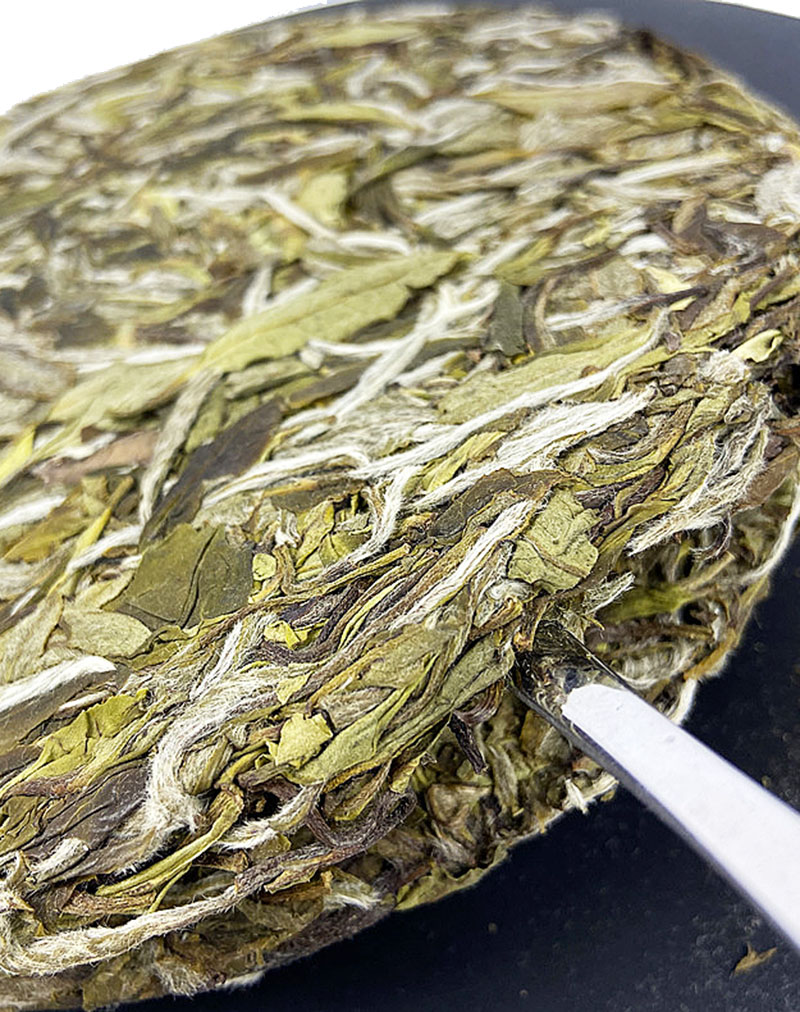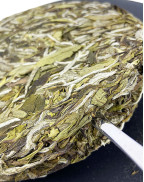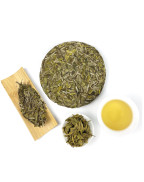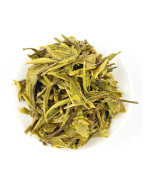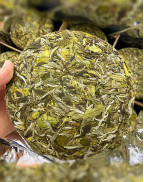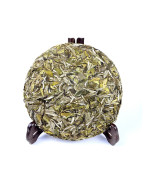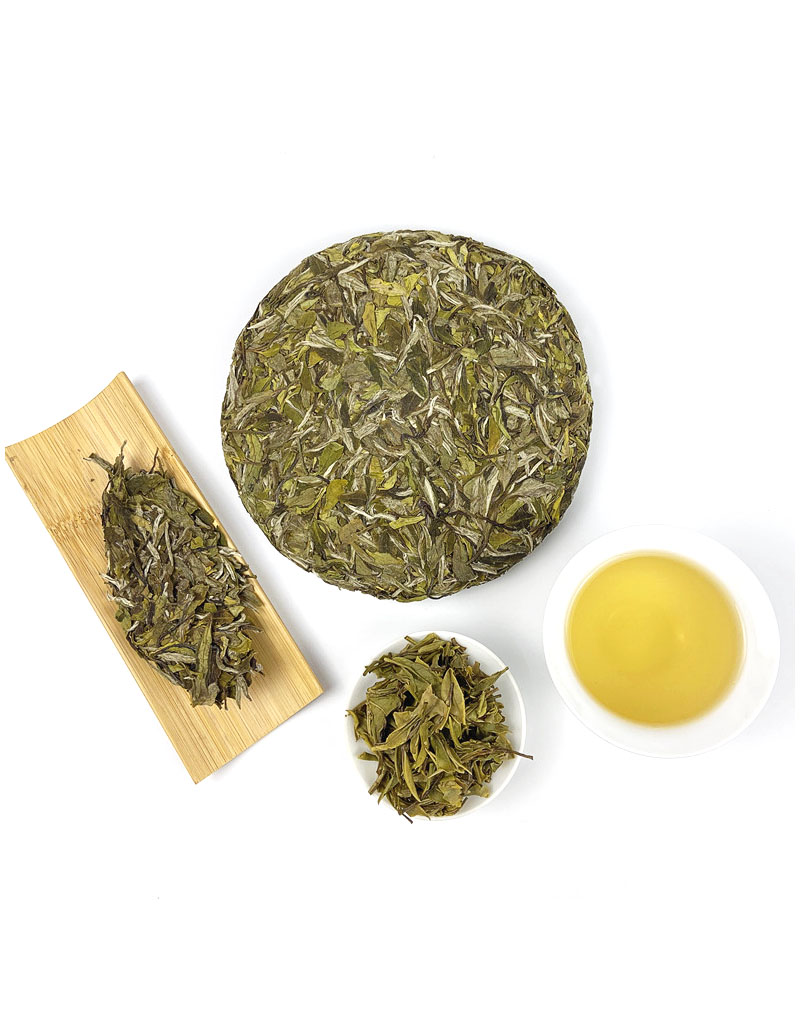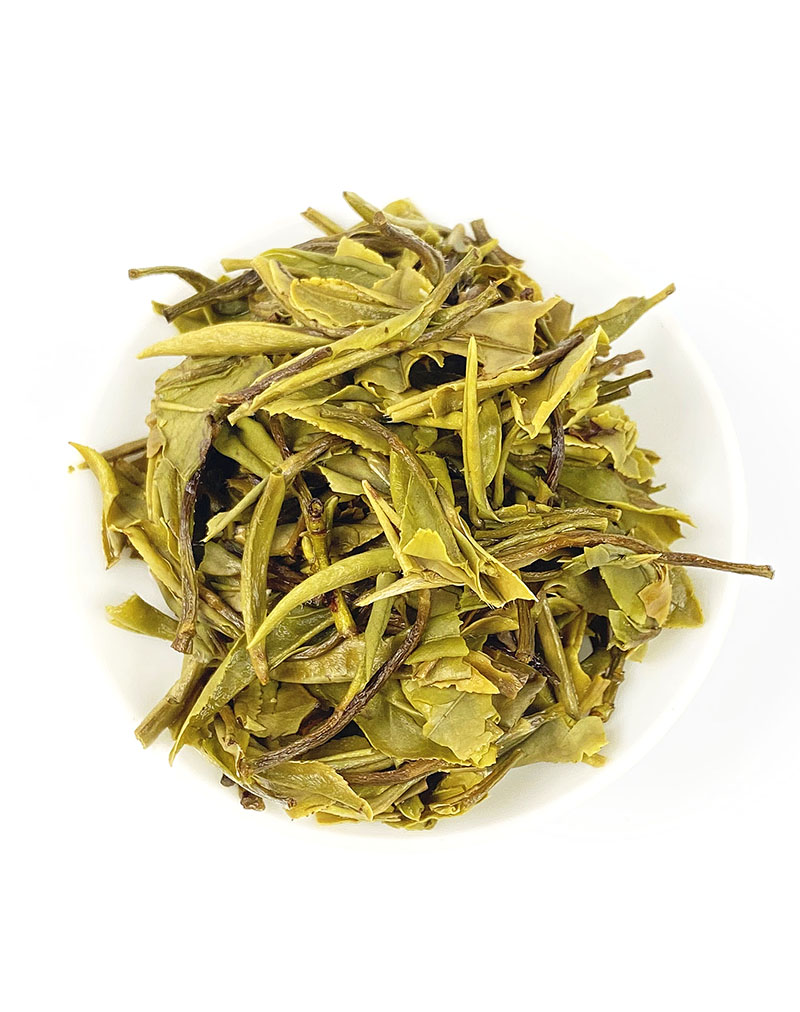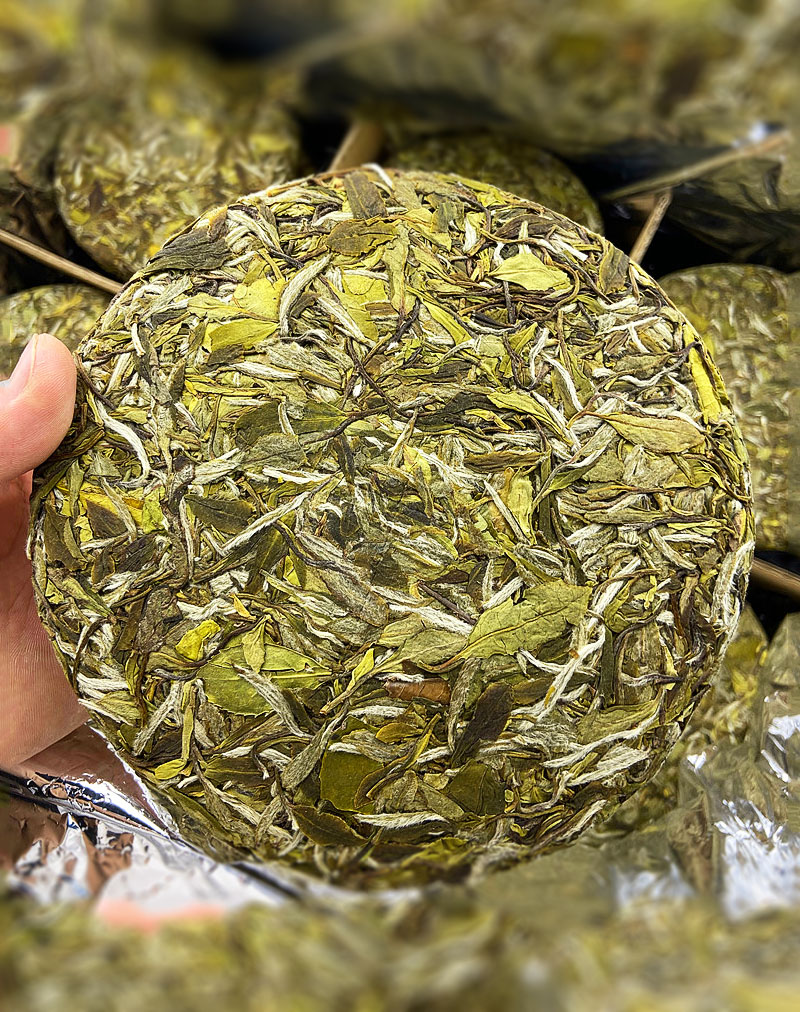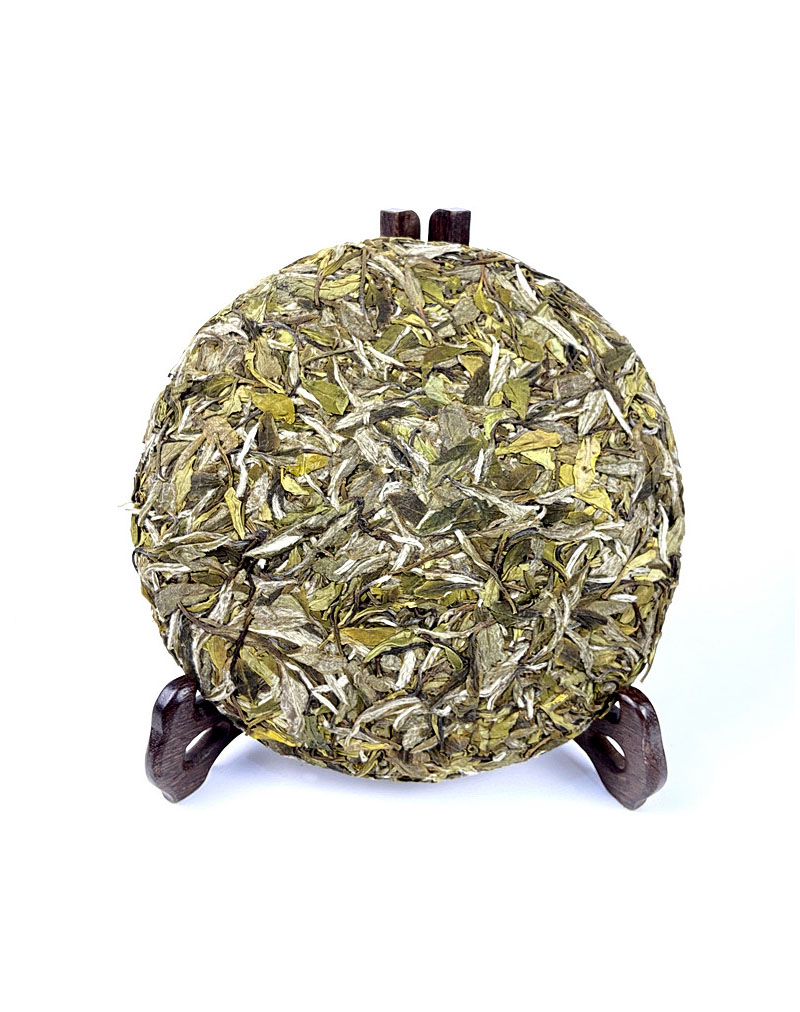High Mountain Sun-dried White Peony Tea Cake
- Product Code: simple
- Availability: In Stock
Basic Info
Name: High Mountain Sun-dried White Peony Tea Cake
Other Names: High Mountain Sun-Dried Bai Mudan White Tea Cake
Category: Fujian White Tea
Origin: Fuding City, Fujian Province
Tea Bush: Fuding Daba
Taste & Aroma: Delicate, subtle and mellow, slightly sweet and floral undertone,refreshing
Liquor: Yellowish,clear and bright
Harvest Period: Spring 2024
Altitude: 600M above sea level
Fermentation: light
Season: Spring tea
Item Form: White tea cake
Ingredients: 100% hand-picked natural tea buds and leaves
Shelf Life: 10 -20 years
Storage: Stored in cool, airtight, opaque containers ()
Flavor: Unflavored
High Mountain Sun-dried White Peony Tea Cake
Nestled in the heart of Fuding, Fujian, we proudly present a captivating White Peony white tea cake crafted in the
year 2020. Sourced from leaves and buds of tea trees thriving at high altitudes, this exquisite tea is meticulously
produced using the traditional sun-drying method. The result is a sensory journey that unfolds with each infusion.
The distinctly evident floral aroma transports you to the blossoming fields of the tea estate, creating a truly
immersive and aromatic experience. With its origin in the rich tea culture of Fuding, this White Peony white tea
cake promises not just a beverage but a refined moment of tranquility and indulgence.
What is White Tea?

White Tea Leaves Are Being Sun Dried
Show Full Description
White tea, a unique treasure among Chinese teas, belongs to the category of lightly fermented teas. It is renowned for its silver-like appearance due to the abundant white hairs on the tea buds. White tea is one of China's six major tea types. Unlike other teas, white tea undergoes minimal processing, involving only sun-drying or gentle heat drying. Its distinctive features include intact tea buds, a covering of white hairs, a fresh fragrance, a clear yellow-green infusion, and a mild and refreshing taste. The name "white tea" first appeared in the Tang Dynasty in Lu Yu's "Classic of Tea," mentioning a place called "Bai Cha Shan" (White Tea Mountain) in Yongjia County. Scholars debate its origin, with some attributing it to the Tang Dynasty in Longxi County (Fuding, Fujian).
Main Production Areas of White Tea
The primary regions for white tea production include Fuding, Zhenghe, Zherong, Xinzhou Old Street in Wuhan, Tianshan in Jiaocheng, Songxi, Jianyang, and Jinggu in Yunnan. The basic processing steps involve withering, baking (or air-drying), sorting, and re-firing. White tea is categorized into four main types based on tea tree varieties and raw material requirements: Silver Needle, White Peony, Longevity Eyebrow, and Tribute Eyebrow.
Where does the flower fragrance of Bai Mu Dan (White Peony) come from?

Fuding Daba
As we all know, fresh tea leaves contain many kinds of aromatic chemical. Some of them are responsible for
emitting fragrance which is very important for the quality of tea. These aromatic substances are unstable in
nature, and a series of chemical reactions are easy to occur during tea processing. These chemical reactions are
the secrets of tea flavor.
Different processing methods and external conditions lead to different fragrances and tastes. Some teas, such
as black tea and oolong tea, require relatively complex processing techniques to produce. A series of oxidation
and polymerization reactions will take place in the process of making tea under humid and high temperature
conditions, which will lead to the reduction of some aromatic substances and the generation of new aromatic
substances.
Compared with white tea, the production processes of fully fermented black tea and semi-fermented oolong tea
are relatively complicated. This is probably the reason why there are great differences between black tea,
oolong tea and white tea in taste and aroma.
Where does the flower fragrance of Bai Mu Dan (White Peony) come from?

Fuding Daba
As we all know, fresh tea leaves contain many kinds of aromatic chemical. Some of them are responsible for
emitting fragrance which is very important for the quality of tea. These aromatic substances are unstable in
nature, and a series of chemical reactions are easy to occur during tea processing. These chemical reactions are
the secrets of tea flavor.
Different processing methods and external conditions lead to different fragrances and tastes. Some teas, such
as black tea and oolong tea, require relatively complex processing techniques to produce. A series of oxidation
and polymerization reactions will take place in the process of making tea under humid and high temperature
conditions, which will lead to the reduction of some aromatic substances and the generation of new aromatic
substances.
Compared with white tea, the production processes of fully fermented black tea and semi-fermented oolong tea
are relatively complicated. This is probably the reason why there are great differences between black tea,
oolong tea and white tea in taste and aroma.

The Core Production Areas Of White Tea In China
Because white tea has undergone the least processing steps, in a sense, white tea has retained more of its
own flavor.
This kind of tea is from an organic certified tea garden in Fujian. This tea garden, like most organic tea
gardens in China, is located in a mountainous area, far away from cities and managed by professional and
technical personnel. The chemical fertilizers and pesticides are not allowed in the tea garden, so the quality
of organic tea grown here is very good.
According to the grading standard, this inferior to Bai Hao Yin Zhen tea in grade. But it does not mean this
tea is not good. On the contrary, this tea is cost-effective. When brewing, the floral fragrance and Xiang Hao
(fur fragrance) are very prominent. It has attracted a large number of tea lovers for its flavour and good
tastes.
If you are unfamiliar with white tea and want to give it a try, this organic white tea will not let you
down.
Introduction to Fujian White Tea
White tea, one of China's six major tea types, has long been associated with Fujian. The development history of Fujian white tea reflects the overall development of white tea in China. Silver Needle, a type of white tea, originated in Fuding County and gradually spread to regions in Min Dong and Min Bei, extending to Shuiji, Zhenghe, and Songxi.
Fujian's special tea, white tea, has been a traditional export commodity through the port of Fuzhou. Initially focused on exports, white tea gained popularity in foreign markets, including Indonesia, Singapore, Malaysia, Germany, France, the Netherlands, Japan, the United States, Peru, and Hong Kong.
The predecessor of China Tea Fujian Company, founded in 1950, was the Fuzhou Branch of China Tea Company. It was one of the earliest companies in New China engaged in white tea trade.
Why Produce White Tea Cakes?
Fuding white tea "cake tea" is primarily created by steaming and softening the loose white tea, then pressing it into molds and drying it. The process of pressing white tea into cakes has become a trend due to several reasons:
Cake tea saves warehouse space compared to loose tea, making it more cost-effective for storage.
The pressed tea has a richer and more mellow flavor compared to loose tea.
Cakes are convenient for transportation, reducing potential damage during transit.
Production Process

a Worker Is Handcrafting White Tea Cakes
The white tea cake production process involves eight main steps:
Sorting: Loose tea is sorted before pressing.
Removing impurities: Any unwanted particles are removed.
Weighing: The tea is weighed according to the desired cake size.
Steaming: The tea is placed on a steamer to soften the leaves and restore elasticity.
Pressing: The softened tea is pressed into molds to form the cakes.
Spreading: The pressed cakes are spread out for aeration, moisture reduction, and inspection.
Drying: The cakes are placed in ovens for slow drying, usually taking about three days.
Aging: The pressed white tea cakes are allowed to mature for at least 3-6 months, preferably during the dry seasons of summer and autumn, ensuring uniformity and transparency.
Despite its seemingly simple appearance, the production of a white tea cake involves numerous intricate steps and complex processes. Understanding the meticulous craftsmanship involved enhances our appreciation for the preciousness of each tea leaf.

The Path Leading To The White Peony Tea Garden
The White Peony white tea cake of 2020 is more than a mere infusion; it encapsulates a transformation of tea leaves
and buds into an unparalleled sensory delight. Harvested from tea trees flourishing in high-altitude regions and
crafted using the time-honored sun-drying technique, each leaf symbolizes the epitome of quality. The pronounced
floral fragrance, coupled with its remarkable ability to withstand multiple infusions, positions this white tea cake
as a masterpiece. Every sip feels like a serene stroll through the tea estate, and with its enduring charm, our
White Peony white tea cake becomes the ultimate choice for those seeking to savor the essence of life. Choose our
White Peony white tea cake, and embark on a journey that celebrates the timeless elegance of Fuding, Fujian.
| Chinese Gongfu Method | |
| Tea | 3g |
| Water | Gaiwan 4oz / 110ml |
| Time | 4 steeps (10s,15s,30s,1m) |
| Temperature | 90°c |
| Teapot Method | |
| Tea | 5g |
| Water | Teapot (8oz / 240ml) |
| Time | 1- 4mins |
| Temperature | 90°c |


